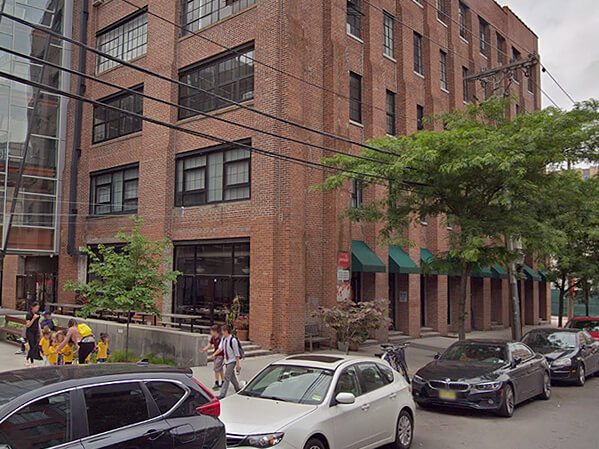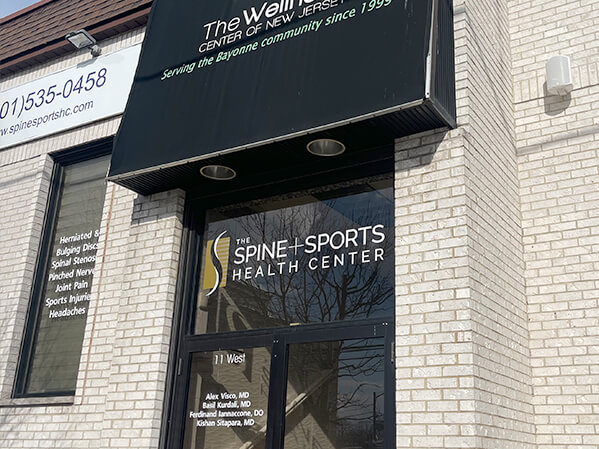Osteoarthritis Doctors
Osteoarthritis is a very common form of arthritis that affects millions of adults around the world. It impacts the joints, usually the knees, but also sometimes the shoulders, hips, and spine. Osteoarthritis occurs when the protective cartilage that is found at the ends of bones has worn down over time, typically due to aging. Although this damage cannot be reversed, the symptoms of osteoarthritis are fortunately very manageable.
The area where pain and discomfort are felt will depend on the type of osteoarthritis the patient is experiencing. Some common symptoms can include:
- Pain, both during and after movement within the affected areas
- Tenderness, especially when pressure is applied to the joint area
- Stiffness, most commonly upon first waking up in the morning or after being inactive for some time
- Swelling
- Loss of flexibility and reduced range of motion
- A grating sensation that feels like the bones are rubbing against one another
- Bone spurs, or hard lumps that form in the affected area
Osteoarthritis is caused when the cartilage between the bones wears down over time. This cartilage gradually diminishes until little to none is left, leaving bone rubbing against bone without the usual protection. There are certain risk factors that can increase the likelihood that a person will experience osteoarthritis:
- Age: Because the condition is caused by wear and tear over time, patients who are 50 or older are inherently at a higher risk.
- Sex: Due to subtle differences in the musculoskeletal system, as well as hormonal fluctuations, women are more likely than men to develop osteoarthritis.
- Previous injury: Those who’ve experienced a previous joint injury are more likely to have issues relating to osteoarthritis as they age.
- Genetics: If you have a family history of osteoarthritis, it’s possible that you are in a higher risk category
- Obesity: Excess weight can put a great deal of strain on the joints, which can increase the rate of wear and tear.
- Some pre-existing conditions: Patients who have certain pre-existing conditions, such as diabetes or high iron levels, have been found to experience osteoarthritis at a higher rate.
If you are experiencing any of the symptoms noted above, it is possible that osteoarthritis is the cause. After reviewing your medical and family history, as well as performing a physical exam, your doctor will have a better understanding of what is causing your pain. The physical examination will help to determine the location and assess the severity of your pain. During the exam, you may be asked to demonstrate how you walk, twist, bend, and perform other movements. This demonstration will help your doctor rule out other conditions.
Imaging tests (e.g. X-ray, MRI) are also typically used so the joint area can be better examined. Depending on the situation, your doctor may also order blood tests to help rule out other conditions that may share similar symptoms.
Types of Osteoarthritis
There are a few different types of osteoarthritis, which are categorized in terms of where the joint damage has occurred.
Knee Osteoarthritis
Knee osteoarthritis is the most common form of the condition. With use over time, the cartilage in the knee joint can wear away gradually. Instead of being smooth, it becomes rough, frayed, and thinner, so the protective space between the bone is less substantial. As a result, the patient experiences the sensation of bone rubbing against bone instead of cartilage. This pain can develop over weeks, months, or even years. As the wear and tear increases, the pain becomes more persistent.
Spine Osteoarthritis
With gradual wear and tear, the cartilage in the spine decreases over time and leads to painful friction. Spine osteoarthritis often affects the lower back, also known as the lumbar region of the spine. This is generally a result of bending and pulling movements that impact that part of the spine. Osteoarthritis can also affect the cervical spine, which is the part of the spine located in the neck. This form of osteoarthritis is sometimes referred to as cervical spondylosis. It is generally caused by the degeneration of the discs that cushion the vertebrae of the cervical spine, bone spurs, or other abnormalities.
Shoulder Osteoarthritis
Shoulder osteoarthritis is when the articular cartilage of the shoulder (i.e. the protective cartilage that covers the surface of the ends of the bones and facilitates smooth, painless movement of the joint) wears away. As time goes on, the cartilage becomes increasingly damaged, leaving the surface of the bones exposed to one another. Shoulder osteoarthritis most commonly develops in the joint that connects the collarbone to the shoulder blade. It can also occur in the joint where the upper arm meets the shoulder blade.
Hip Osteoarthritis
In the same vein as knee, shoulder, and spine osteoarthritis, osteoarthritis can also impact the hip. The friction that occurs in the hip bone can cause the cartilage to wear down, resulting in bone rubbing against bone with no protection. In some cases, the damaged bones can actually begin to grow outward and form bone spurs.
What is the best treatment for osteoarthritis?
Pain associated with osteoarthritis can often be successfully managed without the need to resort to surgery. At Visco Spine & Joint Center, we take an integrative approach towards treatment for osteoarthritis pain. We will formulate a personalized treatment plan to help alleviate your pain. We specialize in non-surgical interventional pain management techniques including:
- Steroid injections
- Viscosupplementation or hyaluronic acid injections
- Nerve blocks
- Radiofrequency ablation
We also offer supplementary treatment options such as physical therapy and chiropractic care.
Your First Stop for Osteoarthritis Pain Treatment
Visco Spine & Joint Center should be your first stop for Osteoarthritis pain. Speak with our medical director, on the phone, for free before booking an appointment.


Meet the Doctors
Our interventional pain management physicians are among the top regional providers of non-surgical, orthopedic care. They have the expertise you need and take the time you deserve to provide quality medical care.
Osteoarthritis Doctors Near Me
With locations in Hoboken, NJ; Jersey City, NJ; Bayonne, NJ; and Wyckoff, NJ, we’re proud to be one of New Jersey’s leading pain management practices for osteoarthritis and other joint conditions. Schedule an appointment today to see how the pain specialists at Visco Spine & Joint Center can help.









